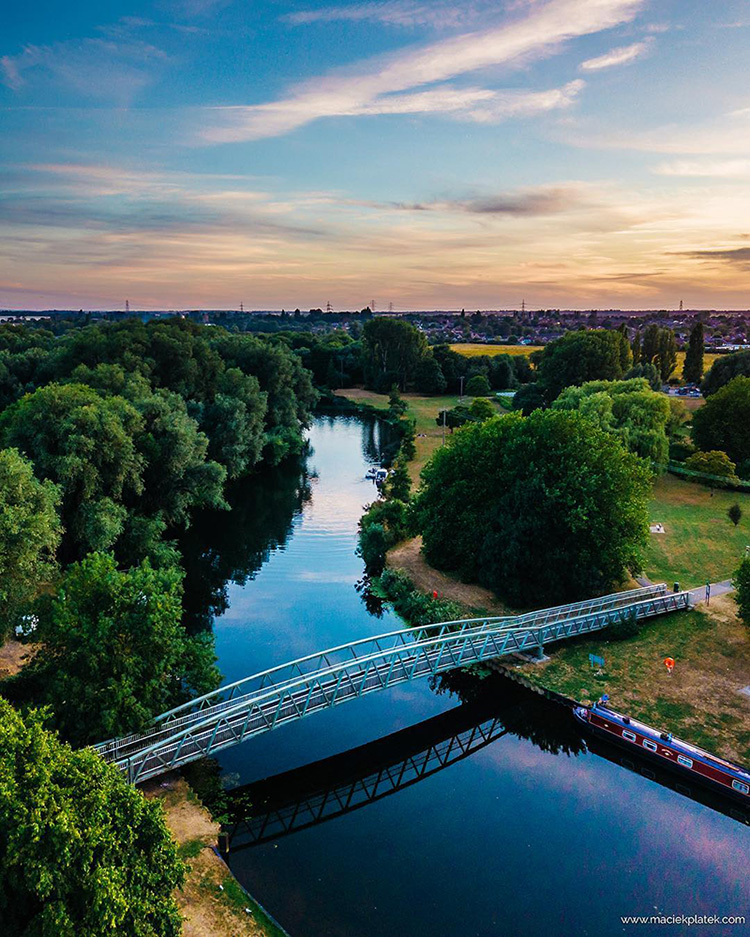“Are we at the top?” might not sound like such an unusual question to hear from a child when you’re out and about, but as I cycled past a family and their dog in the park the other morning, I was intrigued by how the adult being questioned was going to answer. Anyway, as is so often the case when I hear snippets of conversation on the move, I thought that it would at best interrupt the flow of conversation, and at worst be considered rude, to stop and listen in, so I kept pedalling.
I’d like to pause briefly in my tale and invite you to think about the situations that could have prompted this question, given the location… (if you’re like me, you might make list, but otherwise just cast your mind around a park environment and consider the options). Maybe the pronoun ‘we’ ruled out trees or playground equipment from your musings, unless you see more families climbing things together than I do, but if not then you might have considered those alongside a hill, perhaps? In fact, they and I were on a bridge, and so the next questions I’d like to pose to you are how many different types of bridge have you come across and how many of those have what you would consider to be a ‘top’?
I thought about this before drawing some pictures (as a student of mine is fond of pointing out, “You love a sketch, Miss!”) and then decided to look up how many different types of bridge there are. Having found various internet sources that gave names to shapes I partially recognised, I couldn’t decide which of those types best described the bridge in question. I shared a photograph of ‘my’ bridge and pictures of the seven main structural types that I’d found on the internet, with a civil engineer I know, as I wasn’t sure which was the closest match or which particular elements were the most important in classifying it; for example, when identifying a triangle, most people first think of the property of having three sides, but to be certain a shape is a triangle, it’s also important that these sides are straight and that they form a closed shape. I wanted to know which properties give each bridge type its name and how to therefore classify one which didn’t exactly match any of the seven types I’d found described. Their answer was that ‘my’ bridge (shown below if you click on ‘Show / Hide photo’) is a double truss bridge, which I had assumed from the pictures I’d seen meant that the main span was flat. On further investigation, my assumption turned out to be wrong, so what my legs had told me, which was that more effort was increasingly required to ride across the bridge, up to a point, and then I could freewheel down the other side, must mean that there was a top, highest point or ‘apex’ (since we’re talking about the highest point of a geometric shape).

© Maciek Platek 2018. Used with permission.
I decided to ask AI for definitions of ‘top’, and this prompted me to realise other uses too. Below are some examples from our combined lists:
- The highest point or uppermost part of something (top of a mountain, building, or tree)
- The surface of an object (the top of the cube)
- Added to an existing word to modify the meaning (tabletop or countertop)
- The lid or cover of a container
- A position (“Put the lettuce on top of the cheese in the sandwich”)
- The highest position in a particular rank or chart ("The Top of the Pops")
- A particular section of a data set ("The top 1% of…")
- A piece of clothing worn on the upper part of the body
- A spinning toy that balances on a point at its base
- Peak performance state (being at the top of your game)
- Maximum volume or intensity (singing at the top of your lungs)
The versatility of the word is much wider than I’d first thought, and the context is often vital in understanding the concept being conveyed.
Back then to the question I overheard and the many answers it had made me consider: I went in search of photographs of the bridge to see if I could locate the ‘top’ via symmetry, both of the surface being walked/biked on, but also the visible highest point of the bridge (presumably at some unreachable point on the structure above us); I wondered if could locate the point at which I started to freewheel as the middle of the bridge, and therefore the highest I was going to get above the river on my bike. All these explorations generated joyful and interesting questions for me, arguably more so than if I’d overheard whatever response/answer was given in the moment. So as a colleague of mine often said, “Perhaps our role (as teachers) is to question answers, rather than answer questions”.
I leave you with “Do things with ‘tops’ always necessarily have ‘bottoms’?” and challenge you and your learners to think of as many examples and non-examples as you can!